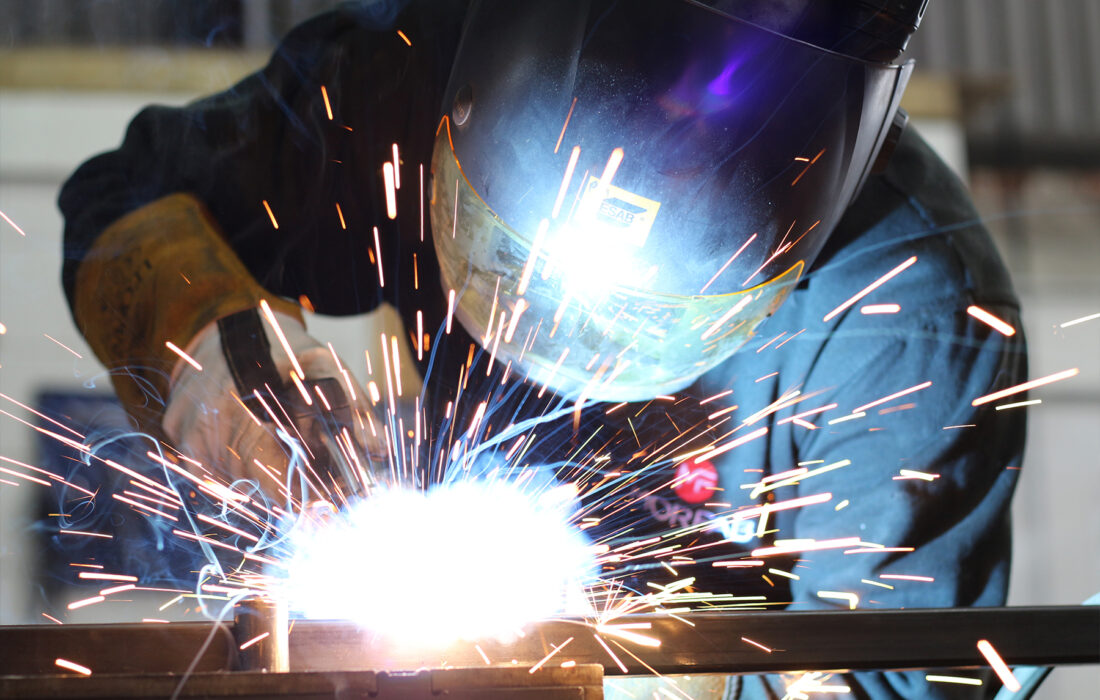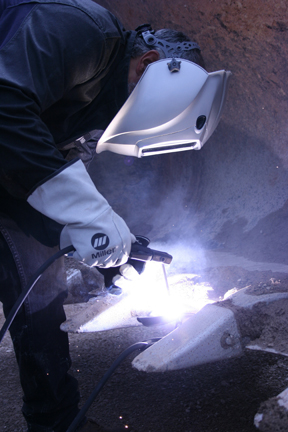Typical Welding Repair Service Issues and Exactly How to Address Them Effectively
Welding repair work commonly run into a variety of problems that can endanger the stability of the end product. Usual issues consist of inadequate penetration, porosity, and imbalance, to name a few. Each issue provides distinct challenges that need certain strategies for resolution. Comprehending these issues is important for welders aiming to enhance their skills and results. This conversation will explore these common welding repair work issues and effective approaches to resolve them.
Poor Infiltration
Insufficient infiltration happens when the weld steel fails to completely fuse with the base material, causing weak joints and potential architectural failures. This problem typically comes from inadequate warm input, inaccurate electrode angle, or inappropriate welding speed. Welders may run into insufficient penetration as a result of a miscalculation of the essential parameters for a certain product thickness or kind. Furthermore, contamination on the base material's surface can impede reliable bonding, exacerbating the trouble. To resolve insufficient infiltration, welders ought to assure appropriate settings on their equipment and keep a tidy job surface area. Regular inspection of welds is suggested to identify any type of shortages early, allowing for timely improvements and the prevention of jeopardized architectural stability in welded assemblies.
Porosity
Porosity is a common flaw in welded joints that materializes as tiny gas bubbles trapped within the weld metal. This issue can compromise the honesty of the weld, bring about reduced stamina and prospective failure under stress and anxiety. Belgrade Fabrication. Porosity generally occurs from contamination, dampness, or incorrect welding strategies, which permit gases to escape into the molten weld pool. To deal with porosity, welders ought to ensure correct surface preparation, keep a tidy working setting, and make use of appropriate welding specifications. Additionally, selecting the ideal filler product and securing gas can minimize gas entrapment. Regular evaluation and screening of welds can aid determine porosity early, ensuring timely restorative actions are taken, therefore preserving the quality and integrity of the bonded framework
Misalignment
Imbalance in welding can occur from numerous elements, including improper arrangement and thermal growth. Recognizing the origin is necessary for reliable resolution. Several adjustment strategies are offered to straighten elements and assure structural stability.
Causes of Misalignment
Welding misalignment commonly stems from a range of underlying problems that can compromise structural stability. One key reason is inappropriate fit-up of components prior to welding, which can cause gaps and unequal surface areas. Variations in thermal development during the welding process can additionally lead to distortion, specifically if the materials being signed up with have different coefficients of development. In addition, insufficient securing and fixturing might stop working to hold components securely in position, resulting in motion throughout welding. Badly maintained devices, consisting of welding makers and devices, might introduce incongruities in the weld grain, further adding to imbalance. Driver error, stemming from inadequate training or experience, can additionally play a substantial role in developing misaligned welds.

Adjustment Strategies Available
Addressing imbalance effectively needs a mix of restorative techniques tailored to the certain concerns at hand. One usual technique is the use of jigs or fixtures to hold components in the appropriate setting throughout welding, making certain constant positioning. Furthermore, pre-heating the products can aid minimize distortion and boost fit-up. For substantial misalignment, mechanical adjustment methods, such as utilizing hydraulic jacks or clamps, can be employed to remedy the position before welding. Post-weld heat therapy may likewise be necessary to eliminate stresses triggered by imbalance. Careful evaluation and adjustment during the configuration phase can prevent imbalance issues from becoming significant troubles, promoting a smoother welding procedure and enhancing total structural stability.
Distortion
Distortion is an usual difficulty in welding that can occur from numerous variables, consisting of uneven home heating and air conditioning. Comprehending the reasons for distortion is vital for implementing reliable prevention techniques. Addressing this issue not just improves structural stability however likewise enhances the overall quality of the weld.
Reasons of Distortion
When subjected to the extreme warm of welding, materials commonly go through adjustments that can cause distortion. This phenomenon largely arises from thermal development and contraction during the welding procedure. As the weld area heats up, the material increases; upon air conditioning, it gets, which can develop interior stress and anxieties. On top of that, unequal home heating throughout a workpiece can aggravate these stresses, causing bending or flexing. The sort of product likewise plays a substantial function; metals with differing thermal conductivity and coefficients of growth may react in different ways, causing unforeseeable distortions. Moreover, poor joint design and poor fixturing can add to imbalance throughout welding, increasing the possibility of distortion. Recognizing these reasons is essential for reliable welding repair service and prevention strategies.
Avoidance Techniques
Efficient avoidance strategies for distortion throughout welding concentrate on regulating warmth input and ensuring proper joint layout. Maintaining a consistent warm input aids to lessen thermal growth and tightening, which can bring about distortion. Utilizing methods such as preheating the workpiece can additionally lower the temperature gradient, promoting consistent heating. Additionally, choosing appropriate joint designs, such as T-joints or lap joints, can enhance stability and lower anxiety concentrations. Applying proper fixturing to protect the work surfaces in area additionally aids in keeping alignment during the welding process. Ultimately, staggered welding series can distribute warmth a lot more equally, protecting against local distortion. By applying these techniques, welders can greatly decrease the possibility of distortion and boost the overall quality of their welds.
Breaking
Fracturing is a common concern experienced in welding repair services, often arising from various aspects such as inappropriate air find more conditioning rates, product option, or insufficient joint prep work. The occurrence of cracks can greatly compromise the stability of the weld, bring about prospective failures throughout procedure. To address this concern, welders must first analyze the origin, ensuring that products are compatible and suitably chosen for the particular application. Furthermore, regulating the cooling price during the welding procedure is vital; fast cooling can cause stress and anxiety and lead to fracturing. Proper joint layout and preparation additionally add to reducing the threat. Executing these approaches can enhance weld top quality and durability, ultimately minimizing the possibility of breaking in completed weldments.

Incomplete Blend
A considerable problem in welding repairs is incomplete blend, which takes place when the weld metal does not sufficiently bond with the base material or previous weld passes - Montana Mobile Welding and Repair Belgrade Fabrication. This problem can bring about weak points in the joint, potentially compromising the stability of the bonded structure. Aspects adding to incomplete fusion include not enough warm input, improper welding strategy, and contamination of the surface areas being signed up with. To resolve this concern efficiently, welders must assure proper pre-weld cleaning and surface area prep work, along with adjust their welding specifications to attain appropriate penetration and blend. Regular assessment throughout the welding process can likewise aid identify insufficient fusion early, allowing for timely corrective actions to enhance the total high quality of the weld
Overheating
While welding fixings can enhance architectural stability, overheating provides a significant obstacle that can lead to material degradation. Too much heat during welding can alter the mechanical residential or commercial properties of metals, resulting in decreased strength, increased brittleness, and warping. This phenomenon is especially crucial in high-stress applications where architectural integrity is extremely important. Recognizing getting too hot can entail aesthetic inspections for discoloration or distortion, as well as keeping an eye on temperature level throughout the welding procedure. To reduce the dangers connected with overheating, welders should use proper strategies, such as regulating warm input, adjusting traveling speed, and utilizing appropriate filler products. Additionally, executing pre- and post-weld warmth therapies can help bring back material buildings and enhance the total high quality of the fixing, ensuring long-lasting efficiency and safety.
Regularly Asked Concerns
What Are the Typical Indications of a Welding Problem?

How Can I Test My Welds for Quality?
To examine welds for quality, one can utilize visual examinations, ultrasonic screening, and radiographic approaches. Each method assures structural honesty, determines defects, and validates adherence to defined requirements, inevitably improving the dependability of the welded joints.
What Safety and security Preventative Measures Should I Take While Welding?
When welding, one ought to prioritize security by wearing appropriate individual safety devices, making sure correct air flow, protecting flammable materials away, keeping a clean workspace, and knowing environments to stop mishaps and injuries.
Can I Fix a Weld Without Renovating the Entire Joint?
Repairing a weld without renovating the entire joint is feasible, depending upon the damage (Montana Mobile Welding and Repair Fabrication). Methods such as grinding, including filler material, or using a welding procedure can effectively attend to certain flaws while protecting the surrounding framework
What Devices Are Crucial for Reliable Welding Repair Works?
Necessary devices for efficient welding repair services include a welding maker, cord brush, grinder, protective gear, clamps, and filler products. Each tool plays a crucial function in making sure high quality and safety and security throughout the fixing procedure. Porosity usually arises from contamination, dampness, or improper welding strategies, which permit gases to escape into the liquified weld swimming pool. Inadequately kept tools, consisting of welding devices and devices, might introduce disparities in the weld bead, further adding to misalignment. When subjected to the intense my latest blog post warm of welding, products commonly go through modifications that can lead to distortion. Breaking is a common concern come across in welding fixings, commonly resulting from various elements such as incorrect air conditioning rates, product selection, or insufficient joint prep work. A considerable issue in welding repairs is insufficient blend, which takes place when the weld steel does not appropriately bond with the base material or previous weld passes.